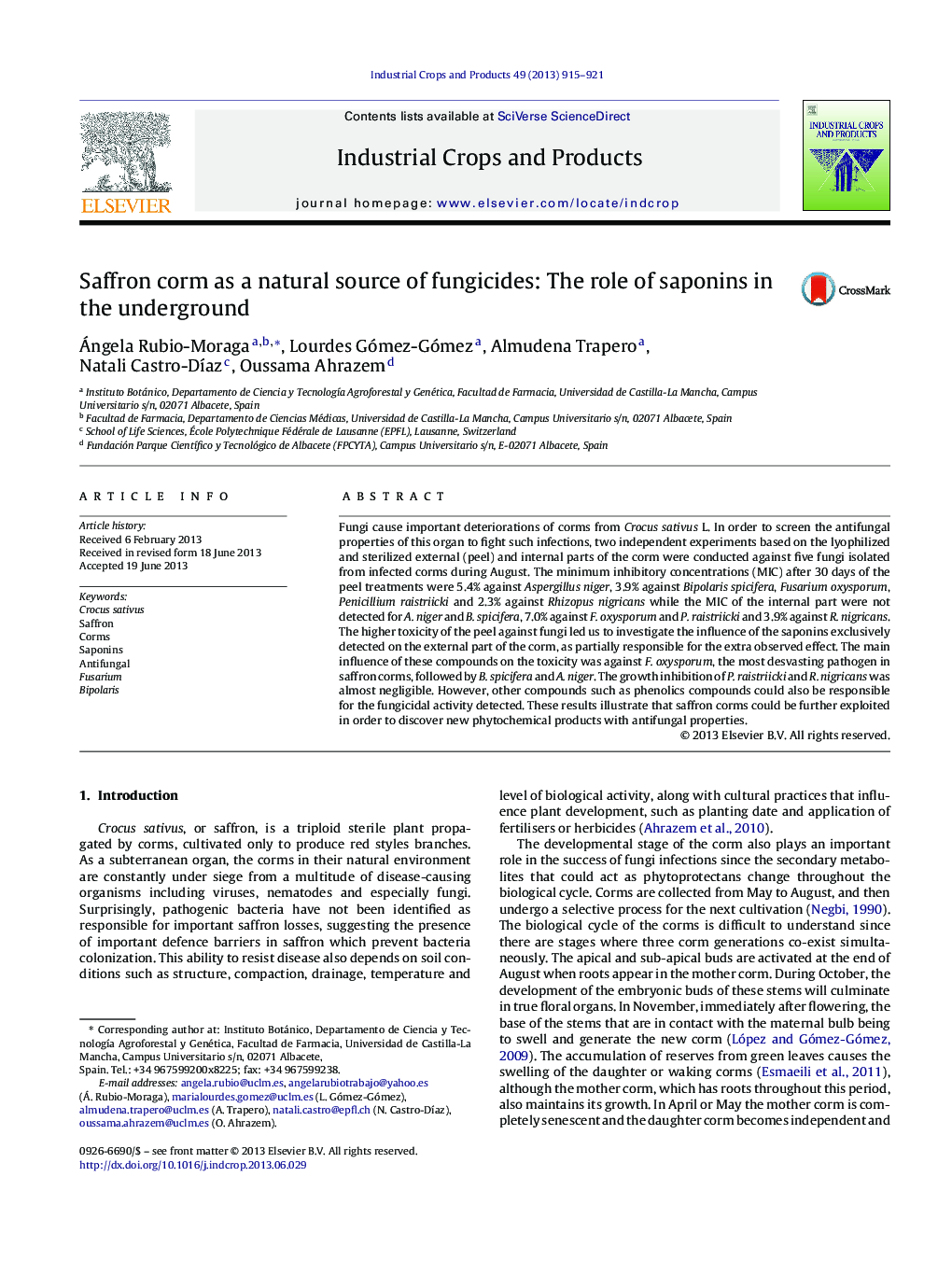| کد مقاله | کد نشریه | سال انتشار | مقاله انگلیسی | نسخه تمام متن |
|---|---|---|---|---|
| 6377418 | 1624860 | 2013 | 7 صفحه PDF | دانلود رایگان |
عنوان انگلیسی مقاله ISI
Saffron corm as a natural source of fungicides: The role of saponins in the underground
ترجمه فارسی عنوان
ذرت زعفران به عنوان یک منبع طبیعی قارچ کش: نقش ساپونین ها در زیر زمین
دانلود مقاله + سفارش ترجمه
دانلود مقاله ISI انگلیسی
رایگان برای ایرانیان
کلمات کلیدی
موضوعات مرتبط
علوم زیستی و بیوفناوری
علوم کشاورزی و بیولوژیک
علوم زراعت و اصلاح نباتات
چکیده انگلیسی
Fungi cause important deteriorations of corms from Crocus sativus L. In order to screen the antifungal properties of this organ to fight such infections, two independent experiments based on the lyophilized and sterilized external (peel) and internal parts of the corm were conducted against five fungi isolated from infected corms during August. The minimum inhibitory concentrations (MIC) after 30 days of the peel treatments were 5.4% against Aspergillus niger, 3.9% against Bipolaris spicifera, Fusarium oxysporum, Penicillium raistriicki and 2.3% against Rhizopus nigricans while the MIC of the internal part were not detected for A. niger and B. spicifera, 7.0% against F. oxysporum and P. raistriicki and 3.9% against R. nigricans. The higher toxicity of the peel against fungi led us to investigate the influence of the saponins exclusively detected on the external part of the corm, as partially responsible for the extra observed effect. The main influence of these compounds on the toxicity was against F. oxysporum, the most desvasting pathogen in saffron corms, followed by B. spicifera and A. niger. The growth inhibition of P. raistriicki and R. nigricans was almost negligible. However, other compounds such as phenolics compounds could also be responsible for the fungicidal activity detected. These results illustrate that saffron corms could be further exploited in order to discover new phytochemical products with antifungal properties.
ناشر
Database: Elsevier - ScienceDirect (ساینس دایرکت)
Journal: Industrial Crops and Products - Volume 49, August 2013, Pages 915-921
Journal: Industrial Crops and Products - Volume 49, August 2013, Pages 915-921
نویسندگان
Ángela Rubio-Moraga, Lourdes Gómez-Gómez, Almudena Trapero, Natali Castro-DÃaz, Oussama Ahrazem,
